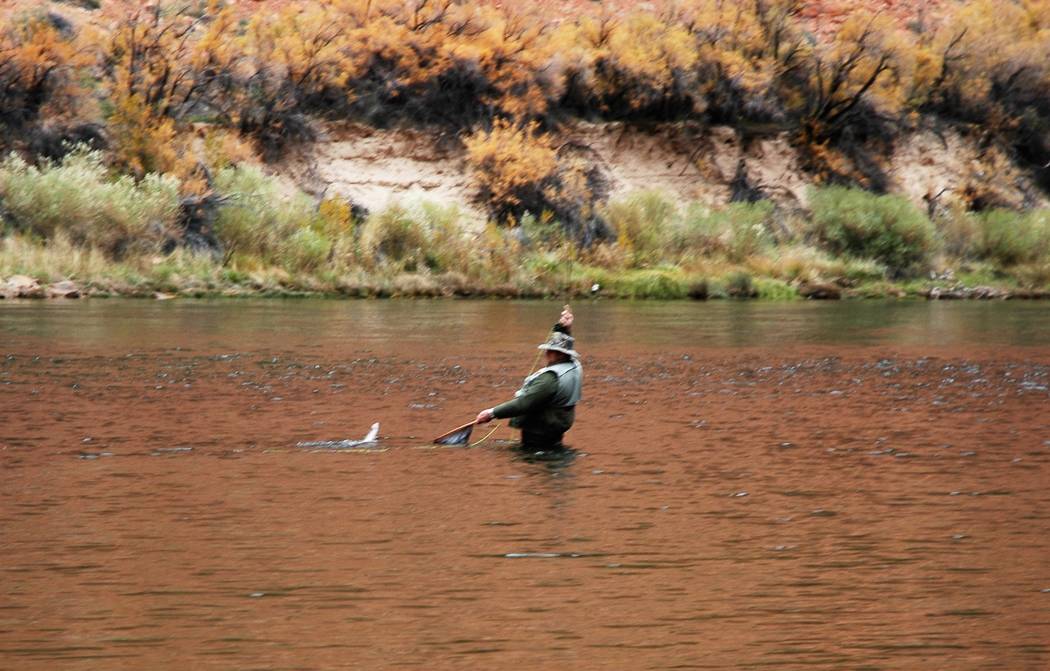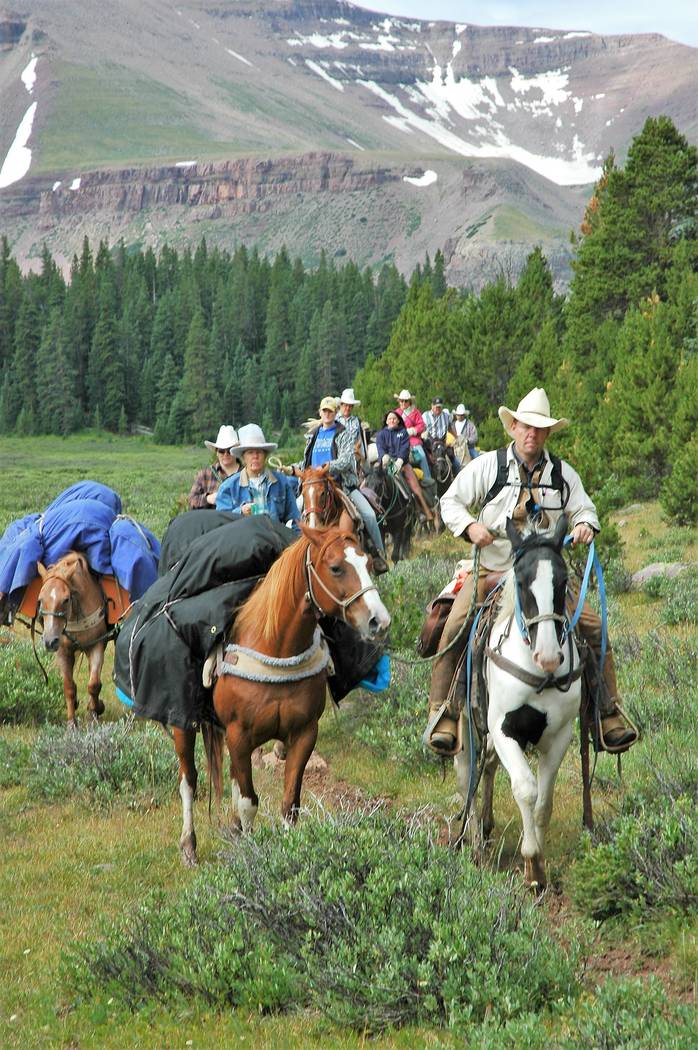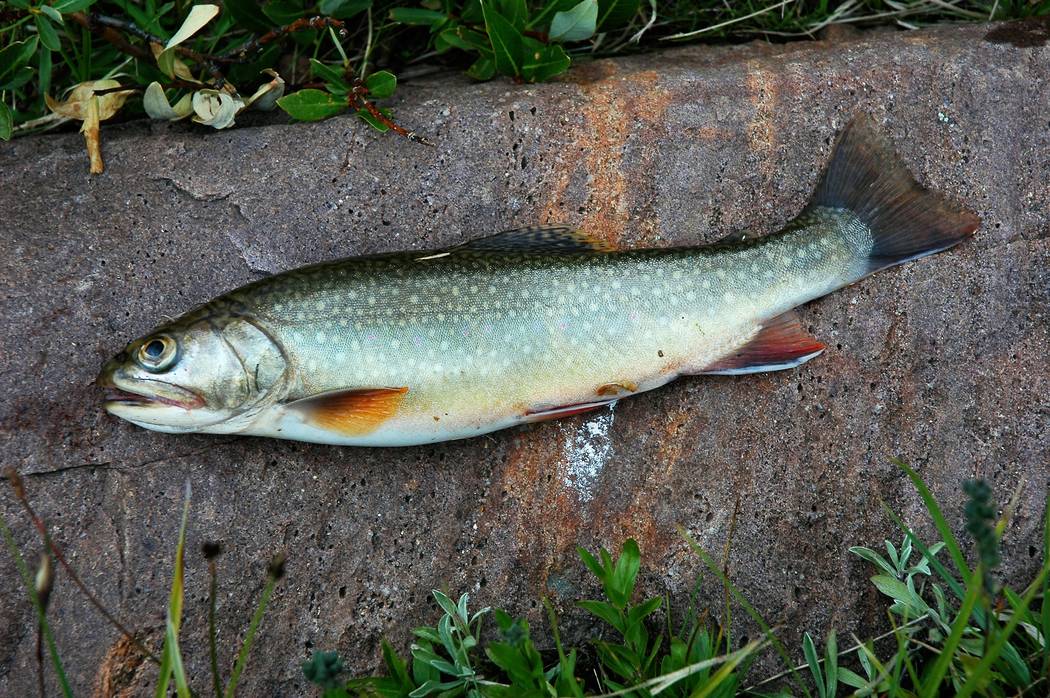A look at Lake Mead water levels leads to other adventures
The key to internet survival is learning to how to find the good that is hidden within this vast labyrinth of data. And most of my best discoveries have been the result of little more than taking a lucky wrong turn.
Such was the case as I began researching the impacts of our wet winter on water levels at Lake Mead. Somewhere along the way, I clicked on a link that brought me to a page titled “Bring Home a Story,” and below that the subtitle, “Find your next adventure.” Its address is www.recreation.gov .
I’m always on the lookout for a good story or another tall tale of misadventure, so the site had my attention.
Then, across the bottom of the page I found a menu with icons representing four general categories of outdoor adventures: Camping Day Use, Tours Tickets, Permits, and Recreation Activities. Respectively, those icons are a tent, a directional sign, a kayak and a deer with a fish leaping over its back. The sign icon did little for me, but the others piqued my interest.
Under the deer and fish was an invitation to “Find the best spots for hunting, fishing, recreational shooting, and other activities.” It was time for some more clicking of the mouse.
My next stop was a page where I found an article about hunting, fishing and pursuing the shooting sports on public land. And down the left side of the page is a list of links to online destinations where a sportsman can find information about pursuing those traditional activities on federally managed lands.
Represented in that list are the U.S. Fish and Wildlife Service, Bureau of Land Management, Forest Service, and National Park Service, all of which have a significant presence in the West. Especially here in the Silver State.
For those who like to hunt or fish in different states, the FWS provides interactive maps of the U.S that allow you to select a state where you might be interested in pursuing those activities. When you click on the state, you are taken to the website for the appropriate state wildlife agency.
Two other FWS links will take you to pages where you will find information about hunting and fishing on wildlife refuges. Today, more than 370 refuges are open to recreational hunting. To help in your search of hunting opportunity, you can select such filters as big game, deer, small game, turkey, upland birds and waterfowl. Fishing is available on 270 refuges.
Before making the trek to the nearest refuge, be sure to check these websites and contact refuge personnel to make sure there are no closures or other unexpected changes to conditions or regulations.
The remaining links are for sporting opportunities on publicly owned lands managed by the BLM, NPS and the Forest Service. Most people don’t realize that hunting is permitted on some units managed by the National Park Service, but there is a list of 40 such units, and the Lake Mead National Recreation Area is among them.
“Hunting can instill an appreciation of wildlife, land, and nature. It’s a tradition passed from generation to generation, as family and friends take to the woods, fields, and waters across the United States,” reads a statement on the NPS hunting page.
According to the BLM website, “Over 99 percent of BLM-managed lands are open to hunting, fishing and recreational shooting opportunities. While the BLM manages wildlife and fisheries habitat, State fish and wildlife agencies regulate hunting and fishing.”
The Camping Day Use link takes you to an interactive map of federal facilities where camping and day use is permitted. All you have to do is search the map for a campground or day use area in an area you intend to visit. One mouse click on the appropriate location will take you to a page where you can learn about the facility’s amenities, check availability and make reservations if necessary.
After taking a trek through www.recreation.gov, I believe it is one of those good uses for the internet and should probably be on every outdoor enthusiasts list of favorites. On your own, you can find each of the individual pages linked there, but why spend your time searching when you can get where you are going with just a click or two.
Freelance writer Doug Nielsen is a conservation educator for the Nevada Department of Wildlife. His “In the Outdoors” column, published Thursday in the Las Vegas Review-Journal, is not affiliated with or endorsed by the NDOW. Any opinions are his own. Find him on Facebook at @dougwritesoutdoors. He can be reached at intheoutdoorslv@gmail.com.











